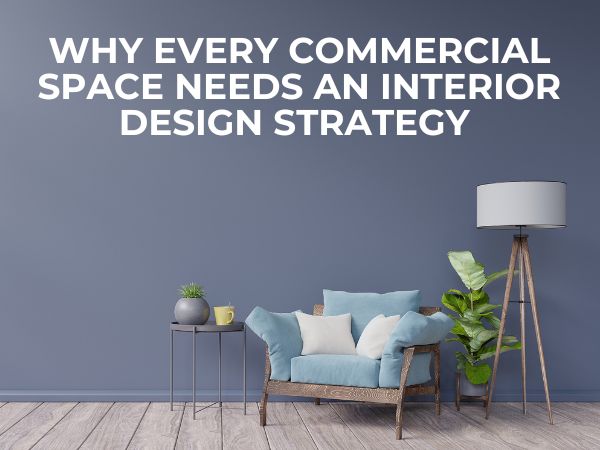In today’s competitive business environment, the look and feel of your commercial space play a vital role in influencing customer perception, employee productivity, and overall brand image. A well-thought-out interior design strategy is no longer just an option; it’s a necessity. From retail stores and offices to restaurants and hotels, an effective design plan can transform the way your business operates and how people interact with your space.
Enhancing Brand Identity
Creating a Strong First Impression
The moment a client or customer steps into your commercial space, they begin forming opinions about your brand. An interior design strategy ensures that your space reflects your company’s values, culture, and professionalism. Through the use of colors, materials, lighting, and layout, designers can create an atmosphere that communicates your brand identity clearly. For example, a tech startup may opt for a modern, minimalist design with open spaces and bright lighting to convey innovation, while a luxury retail store may choose plush materials, warm lighting, and detailed decor to express elegance.
Consistent Design Language Across Locations
For businesses operating in multiple locations, consistency is key. An interior design strategy ensures that all your spaces maintain a unified look and feel, reinforcing brand recognition. This consistency helps customers feel a sense of familiarity and trust, no matter which branch they visit. Whether it’s the choice of furniture, wall finishes, or lighting fixtures, a cohesive design strategy ties all your locations together under a single brand umbrella.
Boosting Functionality and Productivity
Optimizing Space for Better Workflow
A commercial space should not only look good but also function efficiently. An interior design strategy focuses on maximizing space utilization without compromising aesthetics. For offices, this could mean creating collaborative zones, private work areas, and ergonomic seating arrangements. For restaurants, it could involve designing a layout that optimizes both customer seating and staff movement. When your space is designed for functionality, daily operations run smoother, leading to increased productivity and satisfaction.
Improving Employee Well-being
The design of a workspace significantly affects employee morale, engagement, and health. Natural lighting, comfortable furniture, noise control, and visually appealing decor can create an environment where employees feel motivated and valued. A well-planned design strategy takes these factors into account, resulting in happier employees who perform better. Moreover, when your staff enjoys working in a well-designed space, it reflects positively in customer service and overall business success.
Conclusion
Investing in an interior design strategy for your commercial space is not just about making it look appealing; it’s about creating an environment that aligns with your brand, supports your business goals, and enhances the experience for everyone who walks through your doors. From improving functionality to strengthening brand identity, the benefits are long-lasting and impactful.
Omega Group provides the best interior design services, offering tailored solutions that blend creativity, functionality, and elegance to meet your commercial needs. With their expertise, your vision can be transformed into a space that not only looks stunning but also works perfectly for your business objectives.






